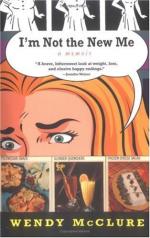[Illustration: FRANCIS I., KING OF FRANCE, AND CHARLES V., EMPEROR OF THE HOLY ROMAN EMPIRE, VISITING THE TOMBS OF THE FRENCH KINGS AT ST. DENIS. FROM A PAINTING BY BARON GROS, IN THE LOUVRE.
Between 1520 and 1545 all Europe was kept in distress and turmoil by a quarrel between Francis I. and Charles V., the chief subject of contention being the duchy of Milan, which Charles held and Francis claimed. Four separate wars were waged by Francis against Charles, all of them unsuccessful. But their majesties had intervals of outward friendship, and in one of these Francis invited Charles, then setting out from Spain for the Low Countries, to pass through France and visit him. The visit was duly paid, was one of great state and ceremony, and from it is derived the incident portrayed in the above picture. Francis is the figure in the centre; Charles, suited in black, standing at his right.]
The revolt which was already making itself felt in French art was a thorn in the flesh of the sensitive Gros. In vain were all the artistic honors showered upon him. In 1824 he was made a baron; since 1816 he had been a member of the Institute; and the crosses of most of the orders of Europe, and the medals of all the exhibitions were his. Nevertheless, about him younger painters revolted. In his secret soul, doubtless, he felt sympathy with their methods. But the commands of the terrible old exile of Brussels were still in his ears.
Finally a portrait of King Charles X., the decorations in the Museum of Sovereigns, and a picture exhibited in the Salon of 1835 were in turn harshly criticized by the press, which looked with favor on the younger men; and Gros, full of years, and of honors which had brought fortune in their train, was found drowned in a little arm of the Seine near Meudon, June 26, 1835. In despair he had taken his own life. With him died David’s greatest pupil and a part of David’s influence. But that portion of the teachings of the master most consonant with French character is not without effect to-day. Less strong than in the generation following David, absolutely extinct if we are to believe the extremists among the men of to-day, it yet remains a leaven to the fermenting mass of modern production. Perhaps its healthy influence is the best monument to the man who “restored to France the purity of antique taste.”
[Illustration: JAMES G. BLAINE.
From a photograph by Handy, Washington.]
THE DEFEAT OF BLAINE FOR THE PRESIDENCY.
BY MURAT HALSTEAD.
The fame of Blaine does not decline, but increases and will endure. It was not his destiny to fill the greater office created by our Constitution, but with a distinction exceeding that of the majority of Presidents, he is enrolled, with Clay, Webster, and Seward, among the illustrious Secretaries of State. The defeat of James G. Blaine for the Presidency in 1884 will rank among the memorable disappointments and misfortunes of the people with that of Henry Clay, forty years before.




